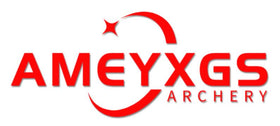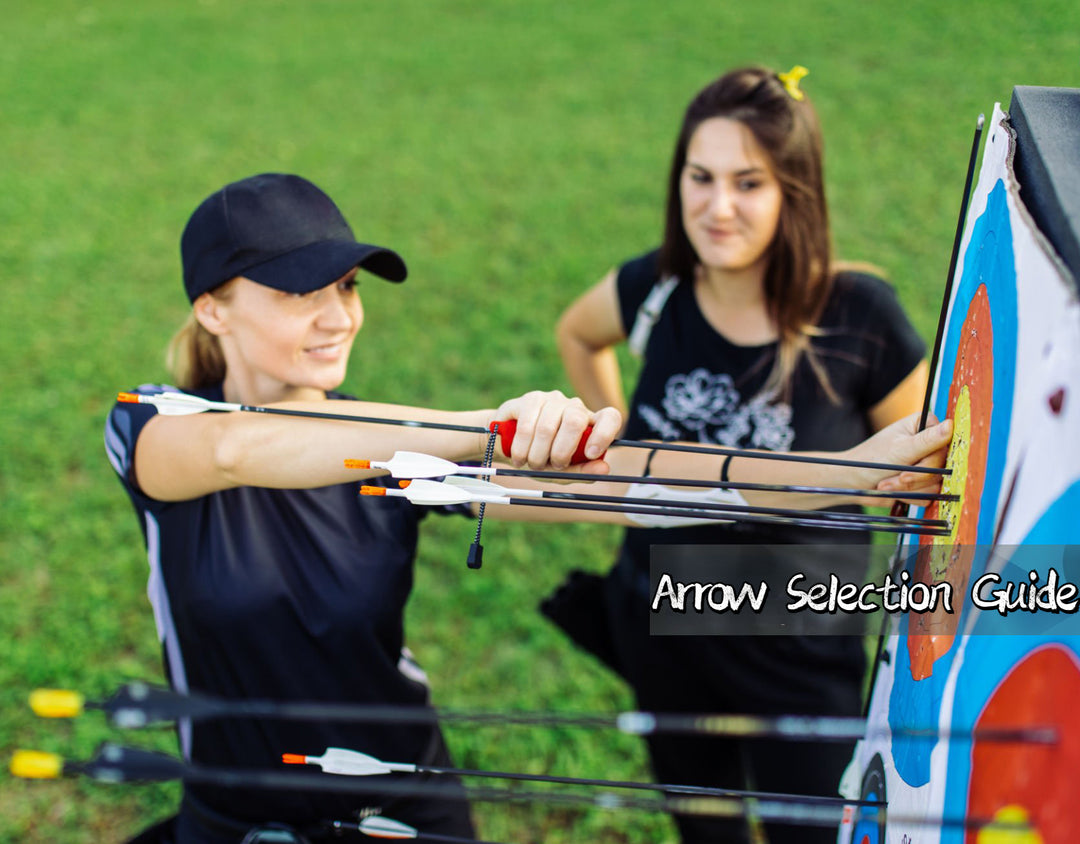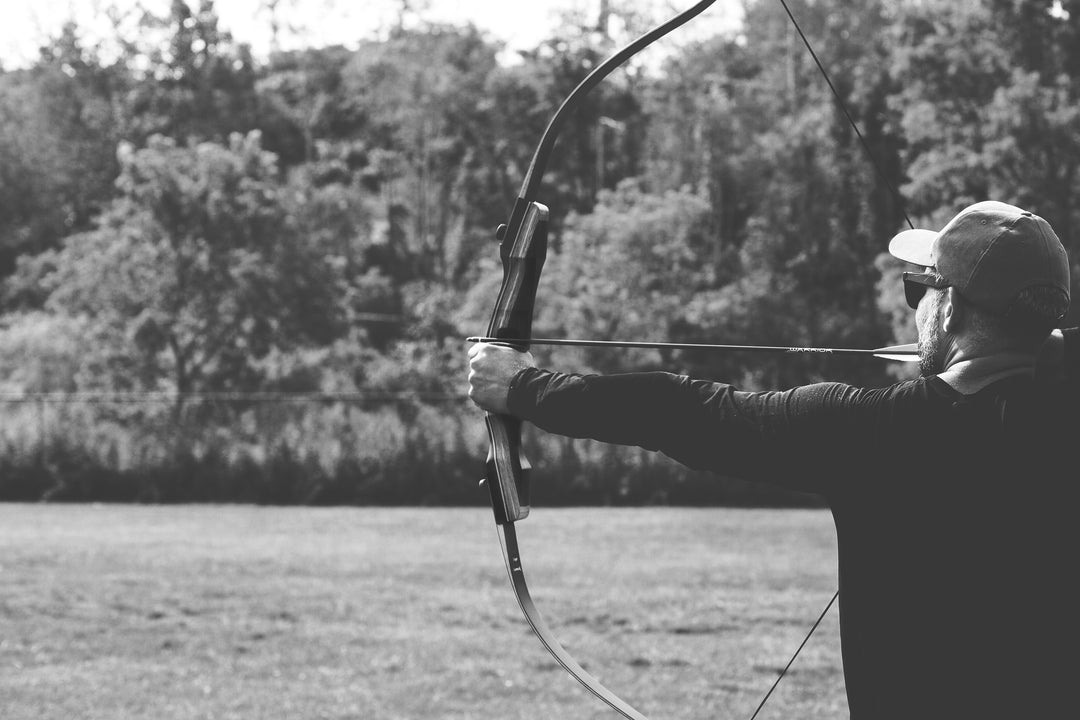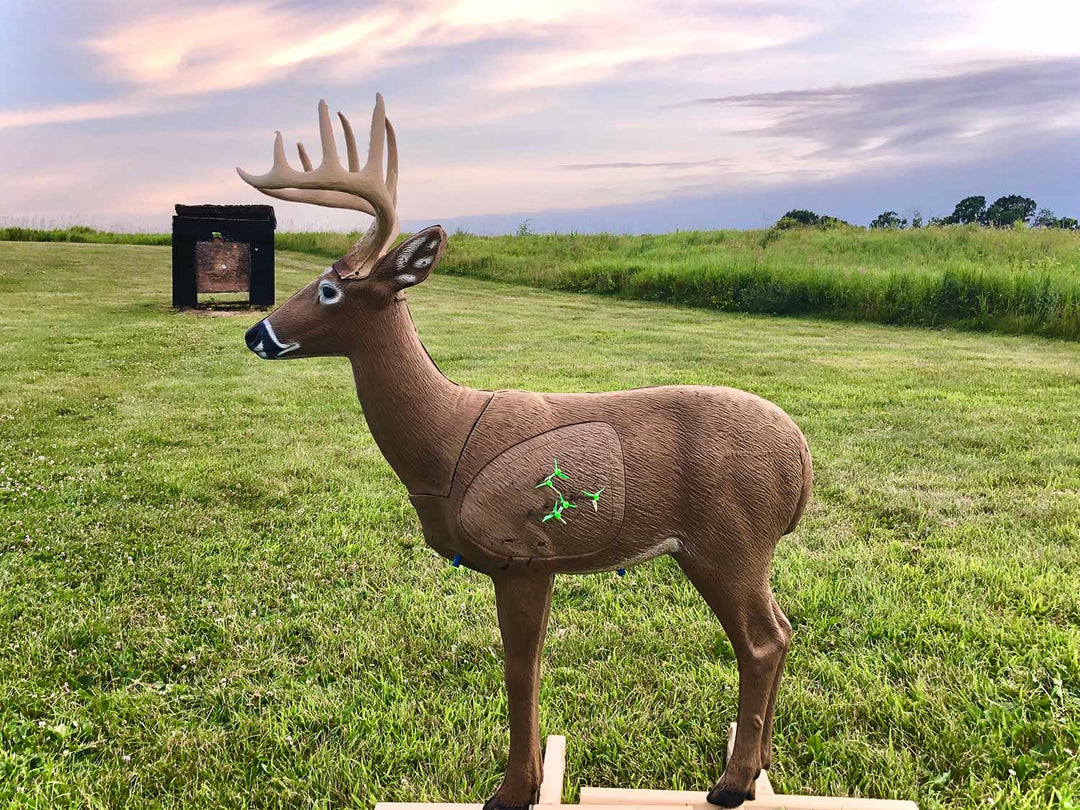How to choose the right arrows for your bow?
When shopping for arrows, the most important consideration is spine weight. You can find the correct arrow spine using the spine chart, which recommends a specific spine weight based on your draw distance, arrow length, and point weight. Also, you should make sure that the nock fits your string.
Compiling your arrow – step by step
If you want to compile your arrows, you must follow 5 steps to make sure that the arrow has the correct specifics for your bow.
Step 1: measure the draw weight
To make sure that the arrow fits your bow, we need to measure the actual draw weight. I say actual draw weight because I don’t mean the draw weight which is printed on the limbs or advertised by the bow. You need to test the peak draw weight of your bow. You can use a luggage scale as an alternative to a bow scale.
For a recurve and traditional archers: draw your bow back until you are at your default anchoring position. And measure at this point.
For compound archers: draw the bow and find the point where the draw is at it heaviest. Do this multiple times, to make sure that you measured the heaviest point. Your highest draw weight is the draw weight we use.
Step 2: measure the draw length
In the next step, you will have to measure your draw length. Draw length is the distance between the string and the deepest point of the grip. Since this is difficult to measure, you can simply measure from the string to the outer edge of the riser.
Step 3: determine the length of the arrow
Alright, that was the hardest part, since we have measured the draw length and draw weight, we can start determining what specs our arrow should have. We will start with the length of the arrow. You can determine the minimum length of your arrow by using the graph below.
| Archer’s profile | Arrow length |
| Experienced | Draw length = arrow length |
| Some experience archery experience | Draw length + 1 inch = arrow length |
| No archery experience | Draw length + 2 or 3 inches = arrow length |
Almost all new archers increase their draw length in the first year. Most new archers start shooting with a bent back, which shortens the draw length. Once their form improves, they increase their draw length by 1 or 2 inches. Therefore, you should make sure that you have some additional arrow length which allows you to draw your bow further.
There is nothing wrong to shoot with full-length arrow shafts as we discussed earlier. Especially if you are uncertain about your technique, it might be a good idea to keep the shafts at full length. You must consider this in the next step because it changes your ideal spine weight.
Step 4: determine the point weight
For the arrow chart, we need one final piece of information, the weight of your point. Use the table below to find the point, that fits your draw weight best. Using a heavier point than recommended isn’t an issue, it will only slightly slow down your arrow.
Using a lighter point can cause issues with your bow limbs. The bow limbs need a certain amount of resistance from the arrows. Otherwise, it would be like you are dry firing your bow, which can cause damage to your bow in the long run.
| Archers profile | Draw weight | Point weight |
| Compound or recurve archer | 20 LBS or less | 75 grains or less |
| Compound or recurve archer | 20 - 30 LBS | 75-100 grains |
| Compound or recurve archer | 30 - 50 LBS | 100 - 125 grains |
| Compound or recurve archer | 50 LBS or more | 125 - 150 grains |
| Traditional archer | 25 LBS or less | 75 – 100 grains |
| Traditional archer | 25 - 50 LBS | 100 - 150 grains |
| Traditional archer | 50 - 70 LBS | 150 – 200 grains |
| Traditional archer | 70 LBS or more | 200 grains |
Step 5: find the ideal spine weight
We now have all our information to find the ideal spine weight: arrow length, draw weight, and point weight. Simply look up your arrow length in the upper bar to find the right row. Then look up the draw weight in combination with the point weight to find the right line.
In general, it isn’t a problem if your arrow spine doesn’t match 100%, it's more of a recommendation. If your spine weight is 100 more or less, it isn’t an issue in most cases. But 300 more or less than the recommend spine weight, can cause significant issues.
Tip: click on the charts to zoom
Compound
Recurve
Traditional
Step 6: choose your fletching and nock
The hard part is over now, we only must choose a nock and fletching. Don’t worry about fletching at all, just make sure that you buy fletching that matches your bow. If you shoot traditional use feathers, if you shoot recurve or compound use plastic vanes. The different vane sizes don’t influence your arrow all that much. It’s only important that you have fletching on your arrow since it stabilizes your shot.
Buying the right nocks might be a bit more difficult because the nock must fit both your arrow shaft as your bowstring. Most manufacturers or sellers have recommended sets of nocks that fit on their arrow shaft. Choosing one of these options will fix your first fitting issue.
To fix the second fitting issue, make sure that you buy nocks that are made for your shooting style. If you have a target archery string, you should buy a target archery nocks. It’s a good idea to contact the seller if you are worried that your nock doesn’t fit your string correctly. Because if your nock doesn’t fit your string it will either decrease your accuracy or not attach at all. For more information about nocks, read the article below:
Step 7: order your arrow
You can now order all your parts for your arrow. Some sellers offer the option to assemble your arrow. If you are just getting started this is a pretty good idea since assembling an arrow requires some additional tools. We will discuss how to assemble an arrow and the tools you need in more detail, ameyxgs.com
Recommended arrow parts
Do you want to make assemble your arrows yourself but don’t want to spend hours to find the right parts? I got you covered, below I will discuss the arrow parts I would buy when making new arrows.
Shafts
I recommend the Carbon arrow shafts. These arrow shafts are one of the cheaper carbon shafts available on the market. That is mainly because these shafts are from a relatively unknown brand, but in my experience, that isn’t an issue. Carbon is very strong and relatively lightweight, so in my opinion, they are the best material for an arrow shaft.
These shafts are available in 300 till 1800 spine, so there should there is a huge range in stiffness. By default, the arrows are either 32 or 31 inches, but you can also order them to your draw length.
Points
For arrow points, I recommend these points from AMEYXGS. These points have a bullet head, which makes them easier to retrieve from the target. The points are available in 100, 120, 150, and 200 grain. You can also break off part of the insert to reduce the weight if needed.
These arrow points have an insert diameter of 4.2 mm and will therefore fit the previous recommend arrow shafts. You will need some hot-melt-glue to fit the arrows in your shafts.
Nocks
I have been using these 4.2 mm nocks for quite some years now and I have been very happy with them. In general, nocks are very simple pieces, and they don’t have to be expensive.
One thing I like about these nocks is that they are made of firm plastic. This means that the nock will deflect the arrow when it’s hit in the rear. When this happens, you only must replace the nock, instead of the entire arrow. This happened to me multiple times and saved me a lot of money!
Vanes
I like to run my arrows with these cheap generic vanes. Spending a lot of money on vanes doesn’t make a lot of sense in my opinion. They get easily damaged, and they don’t need to be high quality.
I choose these vanes because they are relatively low profile. Some vanes are quite large which can cause clearance issues and slows down the arrow. If you shoot with a traditional bow, you should pick some vanes made of feathers, like these.











Very useful recommendation, thanks Joe-AMEYXGS Archery
Leave a comment